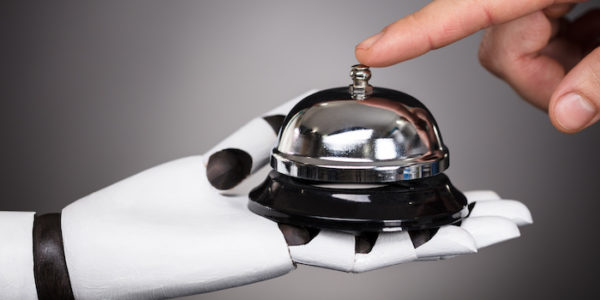Robots have a checkered history inn hotels. There was the all-robot hotel staff in Japan…that was fired and replaced by humans. There was Pepper, a popular concierge…that is no longer in production. Research shows that hoteliers believe human beings are better at hotel work than robots.
Yet robots are increasingly showing up in hotels. More quietly nowadays than when it was a proof-of-concept situation, but there are many hotels that have robot workers.
What do robots do in hotels?
Service robots can change light points, clean rooms, supply towels, and disinfect surfaces. Using robots for tasks like these can reduce costs and make hotels more competitive.
They can’t fold up the end of the toilet paper roll into a charming origami design.
But they can deliver things. Not only can they deliver room service foods, they can show up with a toothbrush if the guests forgot theirs or bring other personal care items without triggering embarrassment.
They can even entertain guests, some hotels are discovering. Chatty robot bartenders and AI-enabled chatbots have been proven to increase guest satisfaction.
Pros and cons
Robots can work around the clock without breaks. They reduce COVID-19 concerns with touch-free service. They can reduce costs and increase accuracy.
Some researchers have found, however, that human workers may try to sabotage robot colleagues if they think that their jobs are threatened. And there are some tasks that human beings just do better.
Toilet paper origami, for sure.
So why have robots so far failed at hotel work? They’ve succeeded in many cases, but it comes down to having robots do work that robots are suited to do, rather than jobs they can’t do very well. People may be just as happy to check in automatically with their phones as to wait in line at a desk when they arrive, or to have their rooms vacuumed by a machine.
Having robots answer questions or otherwise provide concierge services can be frustrating for guests who were expecting a human being. When complaints begin, hotels regret that step in automation.
